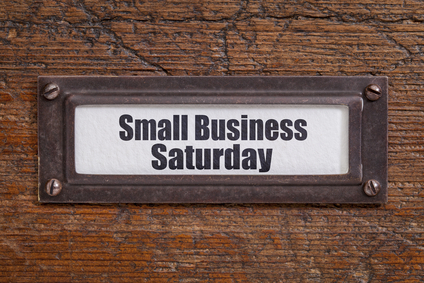
Registration for this year’s Small Business Saturday, the shopping bonanza conceived and supported by American Express. For one day, Amex offers cardholders free credit when using their plastic at participating companies. This year, the date has been set for Nov 29th, the Saturday following Black Friday.
The project - now in its fifth year – aims to draw attention to brick and mortar businesses in customers’ locales. With so much of our spending now conducted online, it’s harder than ever for small, regional businesses that rely on foot traffic to stay afloat. Small Business Saturday has gained popularity year on year, and now sits happily in between Black Friday and Cyber Monday as one of the biggest shopping days on the calendar.
Soaring rates of participation attest to the overwhelming popularity of the event; registrant numbers are capped so it’s advisable to register early. If you think your business could benefit, follow the link above. If you’re unsure, read on for everything you need to know about Small Business Saturday…
Who is eligible?
According to the Small Business Administration (SBA), a ‘small business’ is defined as having fewer than 500 employees for manufacturing industries and an average of $7.5 million in annual receipts for non-manufacturing industries.
How many firms qualify?
Under those guidelines, there are 23 million small businesses operating in the United States, generating 54% of all sales in the country. Those figures alone are indicative of the crucial role played by SMBs in local and national economies.
Why is it important to support SMBs?
Small businesses account for up to 40% of all American retail jobs. They also contribute disproportionately to good causes and non-profits – with 250% more donations coming from small businesses than larger corporations (according to the Seattle Good Business Network).
If you live in a small community, it’s even more imperative that you help local businesses. A Civic Economics study conducted in Grand Rapids, Michigan, reckons $68 out of every $100 spent at a local business remains in the local economy (compared with just $43 spent at your nearest branch of, say, Walmart). For advocates of small-scale, regional business as a way of improving community ties and reducing urban alienation, these are pretty impressive figures to have at your disposal.
How successful is Small Business Saturday?
The event has been gaining traction in a remarkable fashion. Last year, a 3.6% rise in spending saw SMB Saturday generate $5.7 billion for local businesses. It’s also proving a hit with politicians keen to show off their grassroots credentials: Businessweek says 41 Governors and 43 Senators have publicly supported Small Business Saturday.
This year promises to build on that success. Amex says 77% of customers plan to shop on the 29th, and 71% of all consumers are aware of the holiday (up from 67% in 2012). A year on year increase of $200 million in spending shows no sign of abating in 2014.
But the benefits of Small Business Saturday extend far beyond one day of spending. The loftiest aim of the scheme is to engage consumers with local commerce in a permanent way. As with all good marketing strategies, the freebies are merely a way to demonstrate the value of a business. When they stop and the customers keep coming back, we can judge SMB Saturday to have been a true success.